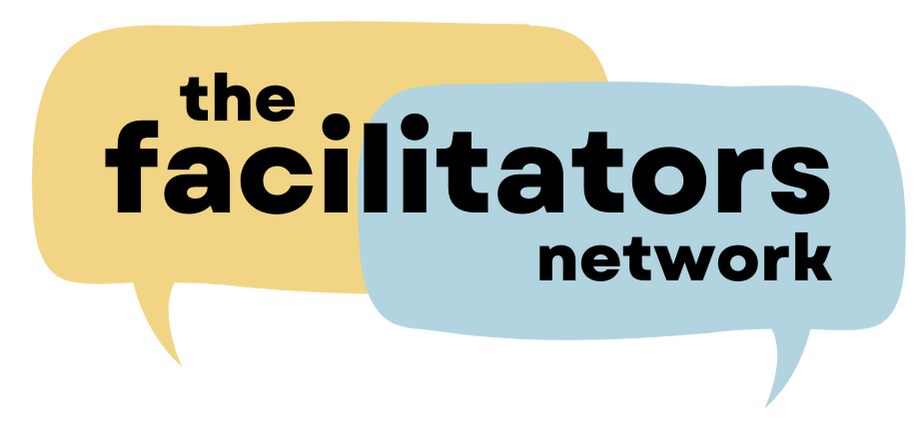When working with large groups, it can be helpful for people to break into smaller groups, so that everyone gets a chance to share ideas and have their voice heard. However, there is more than one way to facilitate small group discussions, and depending on the situation, some methods work better than others.
Here are 7 ways to facilitate small group discussions. What method might work best for your next session?
1. Together Alone
Together Alone is a method that allows people to brainstorm ideas or thoughts on their own, before sharing those ideas with a group. In its simplest form, participants are given 2-3 minutes to write their individual thoughts or ideas on post-it notes, and then they take turns sharing those ideas into the group. The rule is: If it’s written down, it must be shared—even if it’s already been shared by someone else.
Together Alone is particularly useful when there is an unhelpful power dynamic in the group or there are a few people that take all the airtime. By giving people a chance to write down their thoughts first, you are creating space for all ideas to be shared.
2. 2-4-All
As the name suggests, 2-4-All is a method that allows people to discuss an idea in pairs (2), then in groups of 4, before feeding those ideas back to the whole group. This is a helpful method to use if the topic being discussed is relatively complex. By discussing the topic in pairs first, there is an opportunity to gain some clarity before adding extra voices to the mix.
3. Piece of the Puzzle
Piece of the Puzzle is a discussion method where each small group focusses on one piece of the puzzle. For example, if you were planning an event, you might have one group discussing things around Health and Safety, one group discussing Marketing, and one group discussing Performances. Once the small groups have recorded their top-of-mind ideas, they feed those ideas back to the whole group for further input.
4. Templates
The key to a successful small group discussion is making sure that everyone is clear about what needs to be discussed. One way to do this is to frame up the discussion with a good question or questions. Another way to create focus is to use a step-by-step template that guides people through a process. One of my favourite templated processes is Constructive Evaluation. You can download a copy of the template here.
5. Roaming Review
This method is a good way to get people moving and allows people to share and hear ideas with lots of different people. In its simplest form, the facilitator states the topic or asks the question, then participants have 3 minutes to share and hear from a partner. On the facilitators signal, people break apart and find another partner to discuss the topic with.
Roaming Review (which is sometimes called Speed Dating) can be facilitated in a few different ways and is largely dependent on how structured you need the conversation to be.
6. Fishbowl Discussions
Fishbowl Discussions can be a tricky method to get right, but done well, they allow for some robust thinking and debate. Traditionally a Fishbowl Discussion happens in the centre of the room, with participants sitting on chairs, in a circle. The larger group is listening in and watching on, as if the discussion was happening in a fishbowl.
The idea is that there is always an empty chair in the circle, so that someone from the larger group can join the discussion. Whenever someone joins the discussion, an existing member of the small group must vacate their spot, in order to create another empty chair. For a fishbowl discussion to work well, you must have some very clear rules in place, including what happens when no-one wants to leave.
7. Bus Stop
The Bus Stop method is a way to introduce movement and energy to small group discussions and is particularly useful if there are several sub-topics to discuss within a limited time.
Place flipcharts around the room, each with a different sub-topic or question as the header. People break into small groups and choose a flipchart—or bus-stop—to talk about first. After 5 minutes, groups move to the next flipchart/bus-stop and start a new conversation. Make sure there are felt pens and post-it notes at every bus-stop so that groups can record their discussions.
Small group discussions are a simple way of making sure everyone gets a chance to speak and feel heard. While it is useful to bring those conversations back into the larger group, detailed feedback is not always necessary, especially if you have limited time. Making flipcharts available for people to read and reflect on can be a helpful alternative.
What methods do you use to facilitate small group discussions?
Kerri Price
Kerri is a professional facilitator with over 20 years experience in facilitation roles. She is the founder of The Facilitators Network and regularly facilitates workshops on Facilitation and Building a Facilitation Business.
Email: kerri@thefacilitatorsnetwork.co.nz


Pingback: Maintaining Energy and Engagement | The Facilitators Network